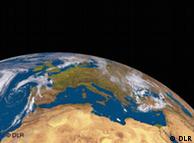 Ecuador's President Rafael Correa. |
New York NY (SPX) Sep 25, 2007
Ecuador's President Rafael Correa presented the Yasuni-ITT Initiative at a United Nations meeting of world leader's on global climate change. This pioneering initiative is an unprecedented proposal by an oil exporting country to leave its largest oil reserve unexploited to contribute to the reduction of global greenhouse gases and to initiate Ecuador's transition toward the world's first truly sustainable economy.
A key part of this initiative is to avoid oil extraction activities in Yasuni National Park, home to at least two indigenous tribes that live in voluntary isolation and one of the most biodiverse places on earth. Ecuador proposes to leave the nearly one billion barrel ITT oilfield unexploited in order to preserve Yasuni's astounding biodiversity, ecosystem services, and the cultural integrity of its indigenous inhabitants.
Ecuador is proposing to forgo the revenue from oil production because it believes the value of avoiding climate change and deforestation is of greater value to Ecuador and the planet as a whole. Read More












